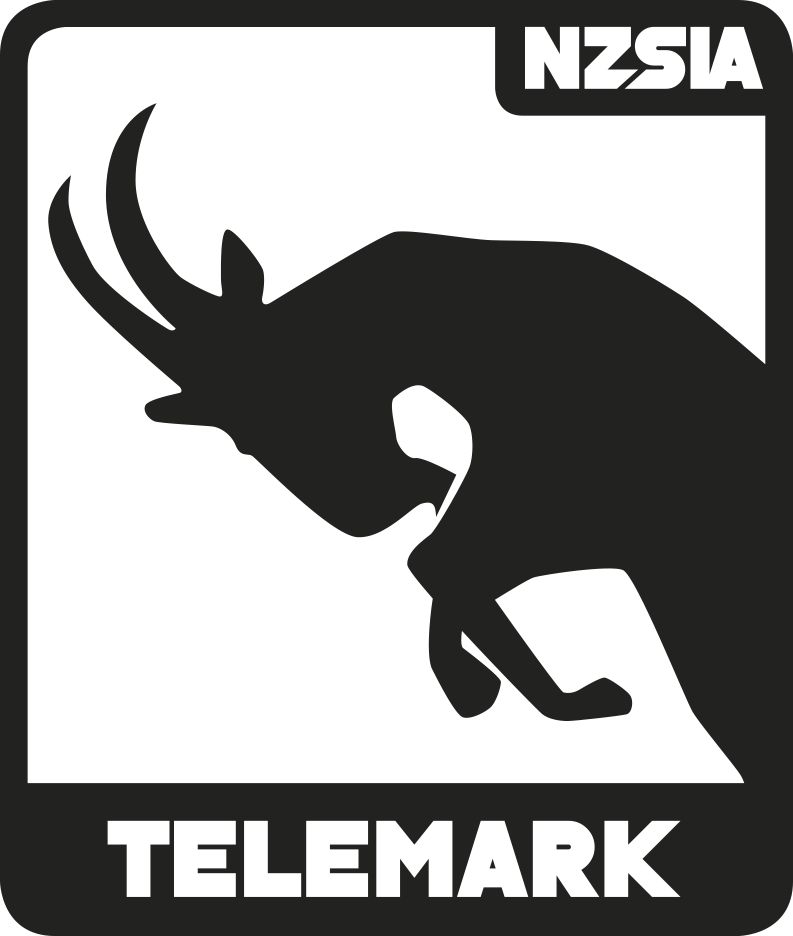Situational Telemark section provides key technical focuses for skiing in different conditions and terrain. These skills are not intended to be used in isolation but should be considered alongside good decision-making, experience, and sound technical fundamentals. Each environment presents unique demands that may require different levels of activity, movement, and tactics
Groomed

 Technical Know-how
Technical Know-how
What’s New
Skiing on groomed terrain offers an ideal environment to refine your edge control, ski-to-ski balance, and efficient steering movements. The following technical focuses can help you maintain control, smoothness, and performance across a variety of turn shapes and speeds.
Performance Tips
Active Stance- Balance Between the Feet
- Maintain an active stance with the centre of mass balanced between two weighted feet. Strong ski-to-ski balance improves edge grip, pressure control, and symmetry.
Lead Change – Speed and Size
- On steeper slopes or at higher speeds, the lead change should be earlier and cover a greater distance. A shorter, more compact stance allows for a quicker, more efficient lead change.
Lead Change – Timing
- The rhythm of the lead change should align with the size and speed of the turn. Quick, short-radius turns require a faster lead change, while longer, slower turns allow more time for a gradual transition.
Active Stance and Balance using Flexion and Extension
- Progressive edging throughout the turn supports smooth transitions. Use a combination of flexion in one leg and extension in the other to help move the body down and into the next turn, maintaining dynamic balance.
Skills
Edging
- Begin the turn with lower leg inclination and finish with angulation. Tip the feet and legs progressively to create edge angles and manage pressure through the arc.
Foot to Foot Balance
- The outside ski is typically more dominant due to its alignment with the centre of mass. A well-stacked position over the outside ski provides a biomechanical advantage to handle increased pressure.
Foot to Foot Balance-Weight Distribution
- Aim to maintain consistent pressure throughout the turn. Keep both skis in contact with the snow, and ensure even weight distribution during the lead change to maintain a stable base of support.
Centre of Mass and Edge Engagement
- Proactively move your centre of mass toward the apex of the next turn. Early commitment helps tip the skis onto their new edge earlier and more effectively.
Edge Tipping and Angulation
- Use the feet and legs to progressively tip the skis. Start the turn with inclination and build into angulation for grip and control.
Ski Design and Edging
- Engage the ski edge progressively to load the sidecut and allow the ski to create an arc. Avoid abrupt edge sets—smooth transitions help the ski do the work.
Posture and Core
- Maintain strong yet relaxed posture. Flex and extend through the joints proportionately to stay balanced. Keep the head, arms, and neck relaxed, with the back rounded and elbows slightly forward. Use the ankles to guide further movements.
Steering from the Legs
- Steer with the legs and feet while keeping the upper body facing the direction of travel. Let the skis guide the turn rather than forcing them.
Parallel Steering
- Move both skis to the new edge at the same time. A wider stance supports parallel movement and improves stability throughout the turn.
Consistent Leg Steering
- Guide the skis consistently through the turn. Avoid forcing the skis—allow them to respond to the inputs from your legs and the shape of the terrain.



